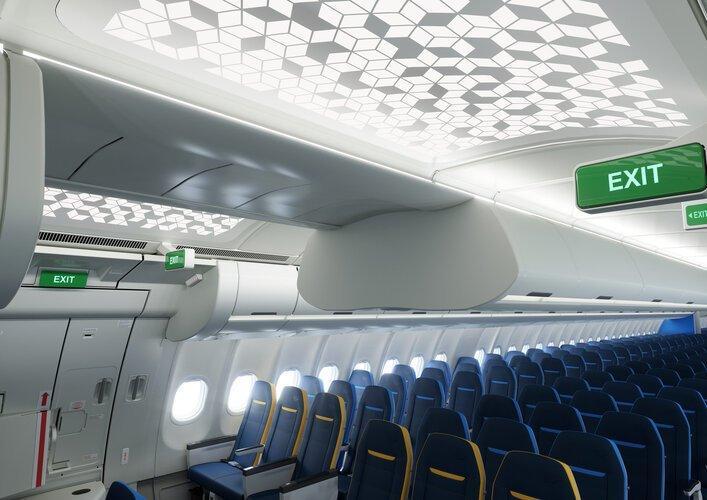
Cebu Pacific unveils new A330neo cabin experience
Cebu Pacific (CEB) has launched its newest cabin interiors for the Airbus A330neo, which reflects the colors of the Philippine islands. CEB’s new cabin experience was designed with LIFT Aero Design. The lighting panel is a fresh, inviting shade of teal, reminiscent of clear Philippine waters. Its front and rear walls feature a raised CEB logo on a vibrant blue-on-blue mango pattern. The Recaro seats are calming, featuring blue-grey leather, and a carbon fiber texture reminiscent of Cebu's famous puso or hanging rice. The 459-seat A330neo allows for more seats without compromising on cabin comfort. Equipped with the latest technologies and industry reference cabin design, this eco-plane uses 25% less fuel than previous generation aircraft—able to consume as little as 1.4 liters per seat per 100 kilometers, thus, burning less fuel and emitting less carbon.
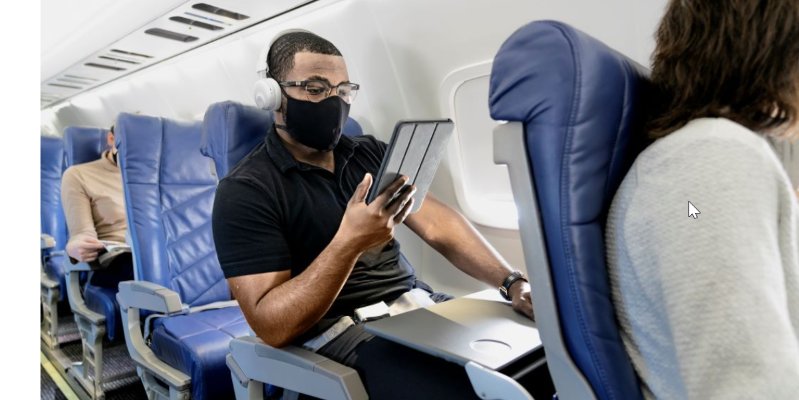
CommutAir to refresh ERJ145 interiors
US regional CommutAir, which operates flights on behalf of United Airlines as United Express, will update and replace the interiors of its entire fleet of Embraer 145XR 50-seat aircraft. The upgraded aircraft is said to provide a “more modernized and comfortable travel experience for customers” flying with CommutAir. Heading into 2022, the Cleveland-headquartered company said customers can expect to see new sidewalls, overhead bins, bulkhead finishes, LED cabin and reading lights, and a completely redesigned lavatory on CommutAir’s entire fleet of ERJ145 aircraft.
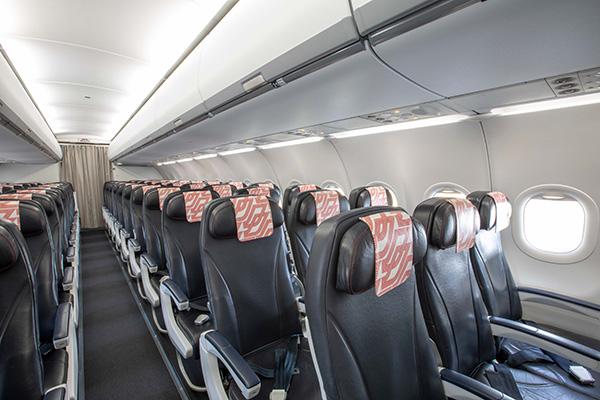
Air France A320 retrofitted with open space shelf bins
The first of 24 Air France Airbus A320s retrofitted with Safran Cabin ECOS Shelf Bins and installed by Air France Industries has returned to service. The ECOS “Efficient Cabin Open Space” shelf bins offer up to 60% more storage capacity. The new luggage compartments are equipped with easy to reach doors that do not encroach into the cabin aisle and provide a lower shelf height for ease of loading and visibility. They provide an easier and smoother boarding experience, greatly reducing the time spent searching for luggage space or the need to put certain bags in the cargo hold. Aircraft turnaround times also reduce to improve efficiency and on-time performance.
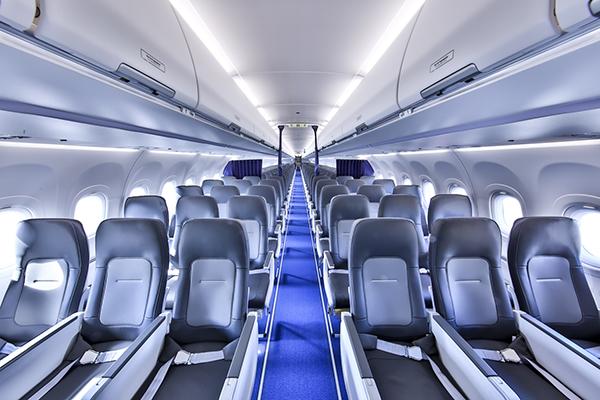
Lufthansa’s A321neo equipped with Airspace Cabin takes off
Lufthansa’s first Airbus A321neo, with the Airspace Cabin, has been deployed on short- and medium-haul routes. The new cabin offers more seating, larger luggage space and Human Centric Lighting that illuminates the cabin with warm red light, graduated intermediate tones and then a colder blue light. Depending on the time of day, the light in the aircraft cabin is geared to the passengers’ biorhythms.
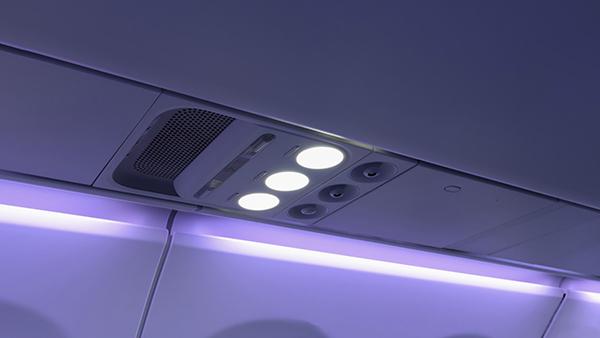
Collins provides upgraded PSUs for A320 Airspace cabins
Collins Aerospace was selected by Airbus to supply upgraded passenger service units (PSUs) for the delivery of the new A320 family Airspace cabin. The modular design integrates directly with oxygen units and conforms to a variety of seat pitches.
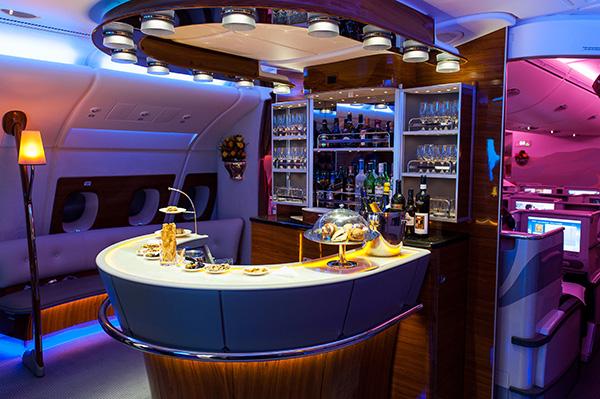
AIM Altitude delivers 123rd ship set of Emirates A380 interior
AIM Altitude has delivered its 123rd ship set of the Emirates A380 interior, including the iconic horseshoe bar, to Airbus in Hamburg. Each ship sets consists of the horseshoe-bar, the chiller bar that stands behind the main bar, left- and right-hand sofas, a stand-up stowage with 55” TV screen, a storage unit for the cabin, and a waterfall feature for the top of the staircase.
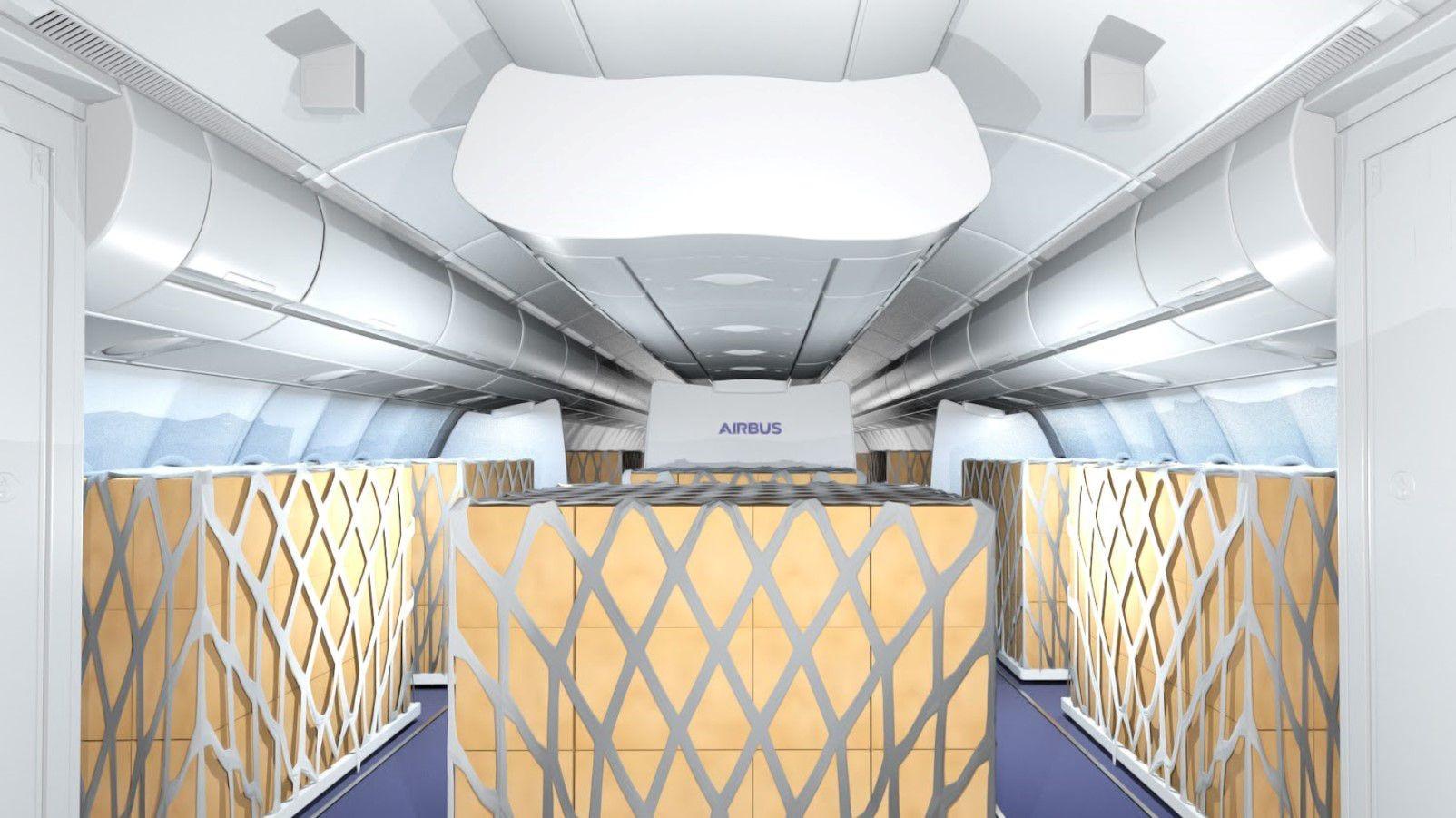
Airbus, LHT develop A330 ‘Cargo in the Cabin’ solutions
Airbus and Lufthansa Technik (LHT) signed a cooperation agreement to co-develop temporary “Cargo in the Cabin” solutions for A330s. This new Supplemental Type Certificate (STC) solution will enable operators to load cargo into the cabins of their A330-200 and A330-300 aircraft. This new solution offers a volumetric cargo capacity of around 78m3 on the main deck of an A330-200 with 12 PKC pallet positions and 18 nets. Meanwhile, the A330-300’s main deck cargo capacity will be around 86m3 with 15 PKC pallet positions and 19 nets.
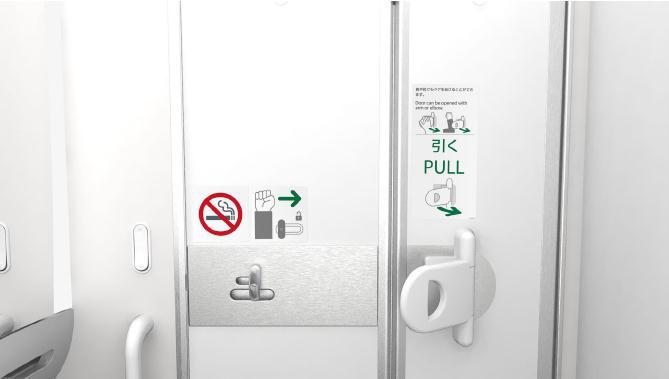
ANA, Jamco team up on hands-free door lavatories
All Nippon Airways (ANA) has partnered with JAMCO Corp. to develop the world’s first hands-free door that allows easy access to lavatories on its aircraft. The door was developed as part of the ANA Care Promise initiative, and will help limit potential vectors for the transmission of pathogens. The first hands-free doors will be introduced to domestic flights starting May 1. The new lavatory door is equipped with a large inner door locking knob and an additional handle so that passengers can use their elbows to unlock the door. Because the door mechanism is different to those found on other aircraft, signage has been placed near the lavatory to provide operational instructions. The hands-free lavatory will be installed on 11 Boeing 787-8 aircraft, two Boeing 787-9 aircraft, and eight Boeing 777-200. The initial installation will be for aircrafts serving domestic routes, while ANA hopes to introduce the system to all domestic and international aircraft in the future.

Boeing, Diehl offer 787 all-LED mood-lighting
Diehl Aerospace, a unit of the leading aircraft component supplier Diehl Aviation, has secured a contract extension from Boeing for the delivery of the interior lighting system for the Boeing 787 Dreamliner. The initial contract for the development and serial production of LED interior lighting for the Boeing 787 Dreamliner had been agreed in 2005. Diehl has continuously improved its interior lighting product on the aircraft type and is now in the position to provide a new generation of LED solutions, offering significant cost reductions while maintaining its outstanding quality performance and optical appearance. The cabin lighting system for the Boeing 787 Dreamliner has been the first all-LED mood-lighting system for the civil aviation market, designed and developed back about two decades ago by Diehl. The current contract expires by end of 2022. The two companies agreed on a prolongation into the next decade.
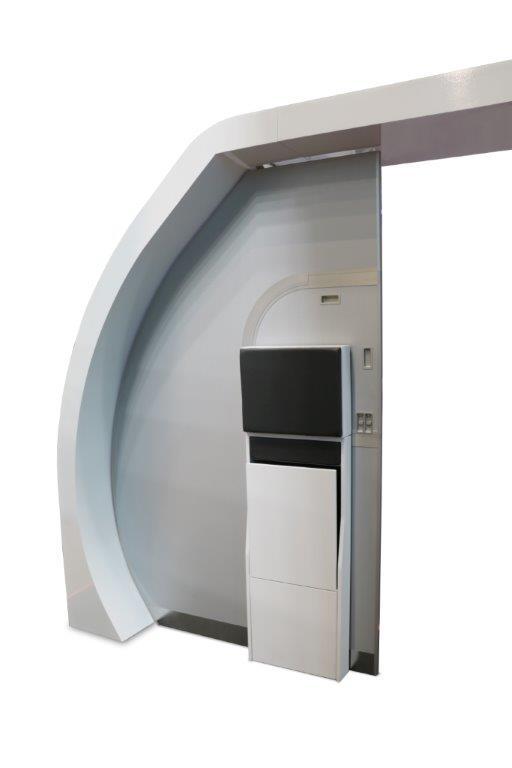
Airbus installs first Bucher Ultralight Bionic Partition on A320
Airbus has installed the first Bucher Ultralight Bionic Partition on an A320 family aircraft. The Swiss aircraft interior solutions specialist focuses on lightweight innovations for the industry. Through its position, the partition separates the passenger area of the cabin from the crew’s working area toward the rear galley and the toilets. As a final element, the partition can be integrated holistically into the cabin design by using decorative foils or paintwork with airline-typical coloring or logo. With this new type of construction, Bucher said weight savings of more than 30% could be achieved in the sense of bionics by using less material than conventional products on the market.
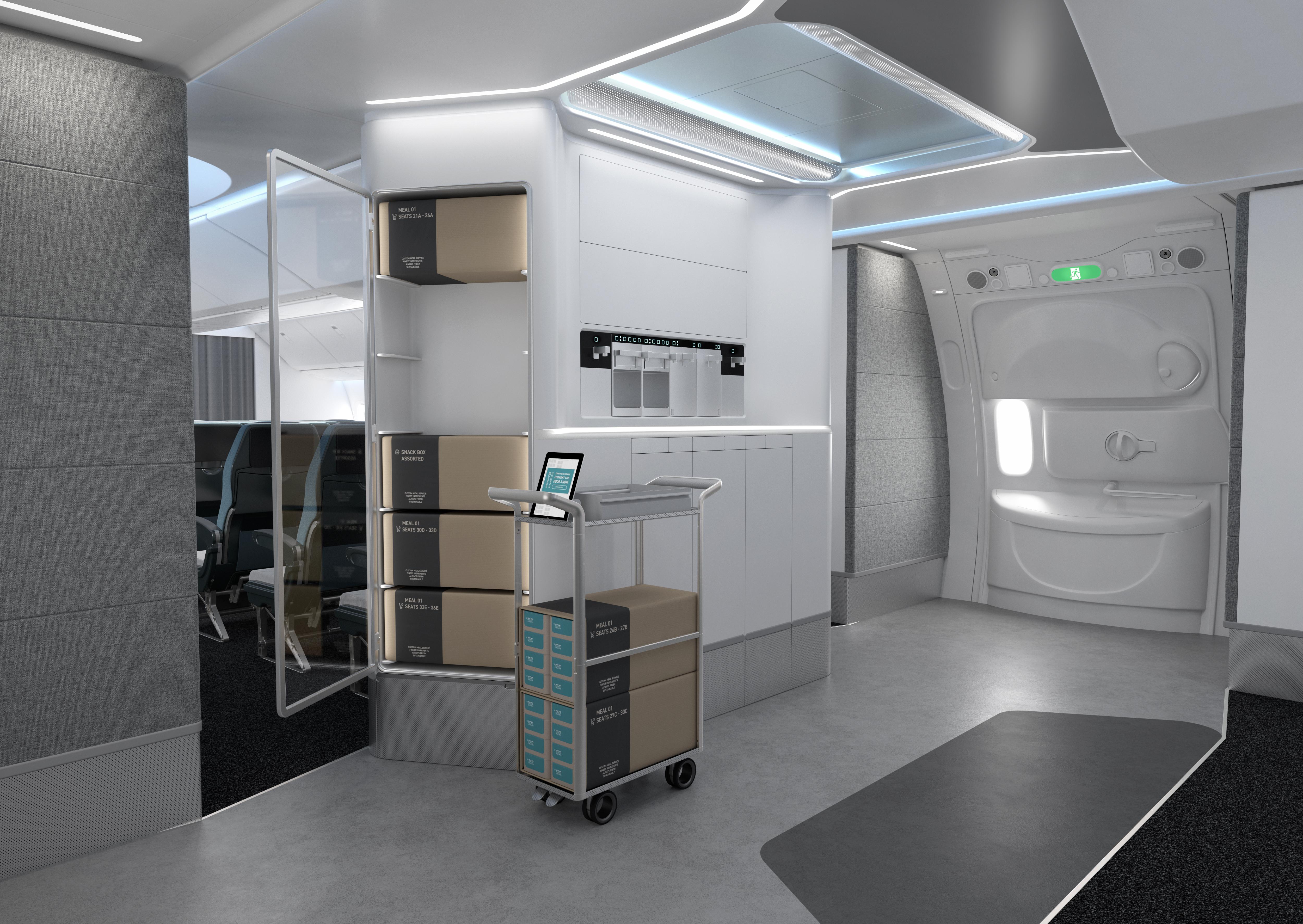
AIM Altitude to introduce new gallery innovation
AIM Altitude will introduce a ground-breaking galley system named ARCA, at AIX 2021. ARCA is a meal-service innovation for sustainability and efficient use of space. So much so that it will give airlines the possibility of adding an extra row of seating or destination monument in the space gained. The ARCA model delivers through a meal-pack system, which dramatically cuts required galley space and enables a rethinking of galley carts fundamentally changing the previous design limitations of galleys, which have not really changed since the 1960s. In addition, ARCA offers options for recycling, waste reduction and greater passenger choice.
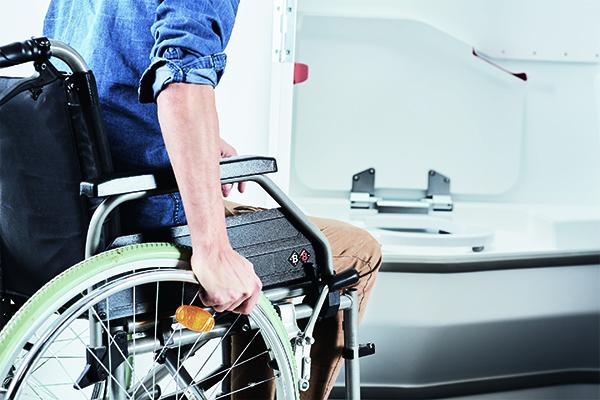
FACC rolls out barrier-free lavatory
Mobility technology company FACC’s LAV4ALL is a completely barrier-free lavatory for passengers with reduced mobility. With the same external dimensions of a standard A320 lavatory, the tapered geometry offers passengers significantly more space. The arrangement has been devised so that people who use wheelchairs can use the LAV4ALL without any assistance for lifting. A caregiver can be accommodated, the available space being much larger than in conventional aircraft lavatories. The LAV4ALL is equipped with many additional features, such as color-highlighted supports and handles, optimization of the sink mechanism, surfaces, lighting, etc. Even the mirror is adjustable, offering reduced-mobility passengers the same facilities as able passengers. The LAV4ALL is designed to support passengers with other additional needs, such as hearing-impairment, or parents requiring baby-changing facilities.
Enhancing cabin interiors products is still on the agenda for designers and manufacturers as they continuously improve cabin designs for efficiency and safety.
